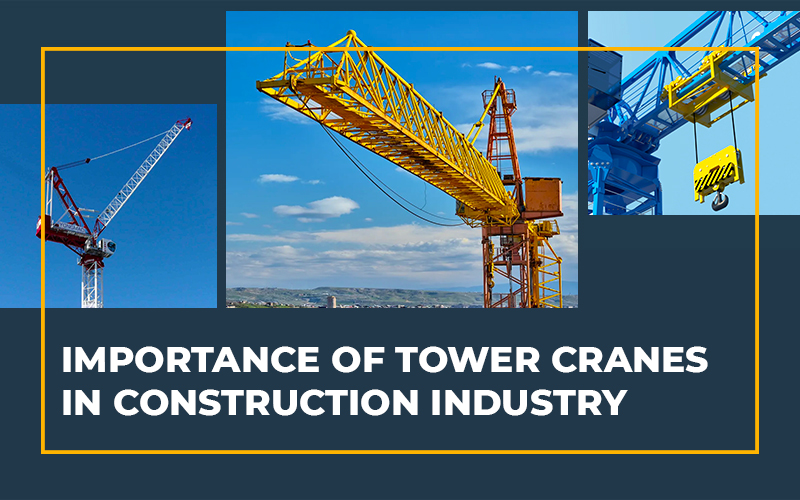It is common to find tower cranes working at huge construction sites. They are a sight to see as they rise up very high in the sky, and it is impossible to miss them. In the construction of huge structures and tall buildings, they are an essential element. They also play an important role in the construction of massive complex buildings and structures. Tower cranes are specifically designed to work at great heights and be able to handle the weight of heavy equipment. They are built to be very strong, so they do not end up causing any accidents on the worksite. Due to that, you can easily find new and used cranes for sale in huge metropolitan areas.
What Exactly are Tower Cranes
Tower cranes can be found among some of the highest buildings in the world. They are used in the construction of extremely tall buildings and are usually bigger than the structure that they are helping construct. The boom of the crane is what helps in lifting the weight, and it is supported by a metallic mast. The boom is in a horizontal position and can rotate 360 degrees. The mast is vertical and is what mainly supports the crane, and the base supports the mast.
Important Components of a Tower Crane
Tower cranes have the following important components besides the boom, base and the mast:
The Slewing Unit
The slewing unit is attached to the top of the mast, and it is what lets the crane rotate.
Operating Cabin
Usually, the operating cabins are at the top of the slewing unit. This is where you can find all the controls of the crane and operate the equipment.
Jib and Counter Jib
The jib is the operating arm that extends from the crane. Jibs are either fixed with a trolley running under them to move things, or they are luffing and move up and down. There is also a counter jib that holds the counterweight, hoist motor, drum, and electronics.
Hoist Winch
The hoist winch holds the motor, gearbox, brakes, hoist drum, rope, and the hoist motor controller. Besides these components, the hoist winch assembly also consists of supporting components like the platform.
The Hook
Cranes have one or more hooks that are used for connecting the material that is to be lifted to the crane.
How to Operate Tower Cranes
Tower cranes are operated from the top of the crane where the operator sits in the operating cabin. However, one person alone cannot successfully run the operation of a crane. There are a number of professionals that need to be present to complete the task at hand. The people needed on-site include a crane coordinator who schedules all the lifts, and it is his job to make sure there are no clashes. A signal person works as a second set of eyes for the operator and provides him with direction on where to move the load. There is also an appointed person who oversees all the procedures and ensures safety after carefully assessing all the risks. Lastly, there is the crane operator who sits in the operating cabin and operates the machine, lifting and moving the material where directed.


 1400 Broadfield Blvd, Houston, TX 77084,
USA.
1400 Broadfield Blvd, Houston, TX 77084,
USA. omer@my-equipment.com
omer@my-equipment.com